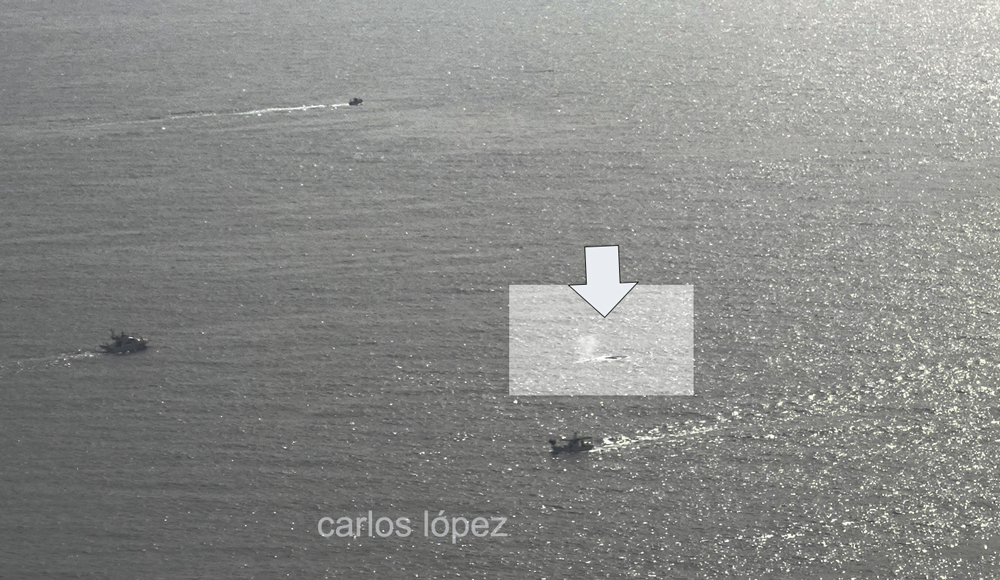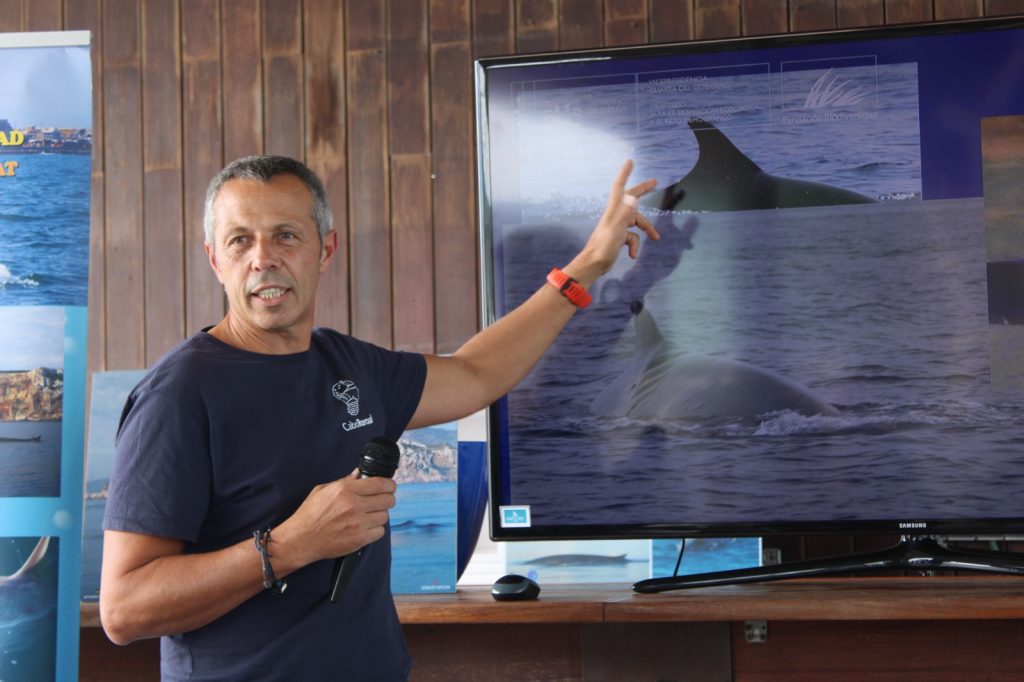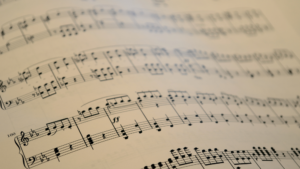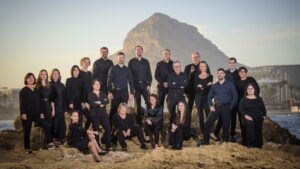90 specimens of fin whale sighted by Cabo Rorquual project

Tuesday 2nd November 2021 – CARLOS LÓPEZ with Mike Smith
Researchers from the Cabo Rorqual project have sighted about 90 specimens of fin whale between June and July as part of the research project to understand why the whales of this species come so close to the coast of the Marina Alta.
The results of the first sighting campaign were presented last Friday by Eduardo Belda, an initiative that consisted of daily whale watching shifts from land (Torre del Gerro) and from the sea, in the surroundings of the Cap de Sant Antoni Marine Reserve from June to July. The observation closed with 46 sightings and about 90 specimens.
Belda explained that during this two-month observation period, there was a peak that occurred in the first half of July. He also explained how the observation initiative worked. The team on land would inform the marine team so that it can locate the specimen, and approach it, always complying with the legal requirements (never obstruct its trajectory, do not approach more than 60 metres and navigate diagonally).
Once beside the whale, the team would make identify by photo and incorporate it into a database. “We managed to take five of these photographs,” he explained, adding that this project will allow us to know in the future if the whales will “pass through here again.” Or even share them with the researchers who follow them in Catalonia or Andalusia.

Another relevant part of the study included the recording of whale song through three sound probes located on the seabed. Belda explained that they have been able to relate some of the sounds to the passage of fin whales sighted from the land by the members of the project team. One of these probes will remain on the seabed around the Cap de Sant Antoni Marine Reserve to be able to analyze them in depth.
The expert also announced that for next year the project will have an expert in marine acoustics who will be able to extract more information from the sounds of the seabed, and determine whether or not there are fin whales.
Likewise, another of the objectives will be to tag some of the whales so that their movements can be tracked through a GPS, which will allow the researchers to know if they go down or up the Mediterranean and even if they leave our area and head to the colder waters in the Atlantic.
During the presentation of the results, the expert asked all boat owners for understanding and respect for these marine species that pass through our coasts. “We all want to have the photo”, but stressed that “we should not be closer than 60 meters from it, we must travel at 5 knots, and stay just for a little while.” At most there should only be two boats.
There is a specific regulation to protect them and obliges boat owners to guide the boat on a diagonal course so as not to hinder the whales transit along our coast.
The Cabo Rorcual project is promoted by the Miteco Biodiversity Foundation, the Dénia and Xàbia Councils and the Research Institute for the Integrated Management of Coastal Zones, which is based on the Gandia Campus of the Polytechnic University of Valencia.




